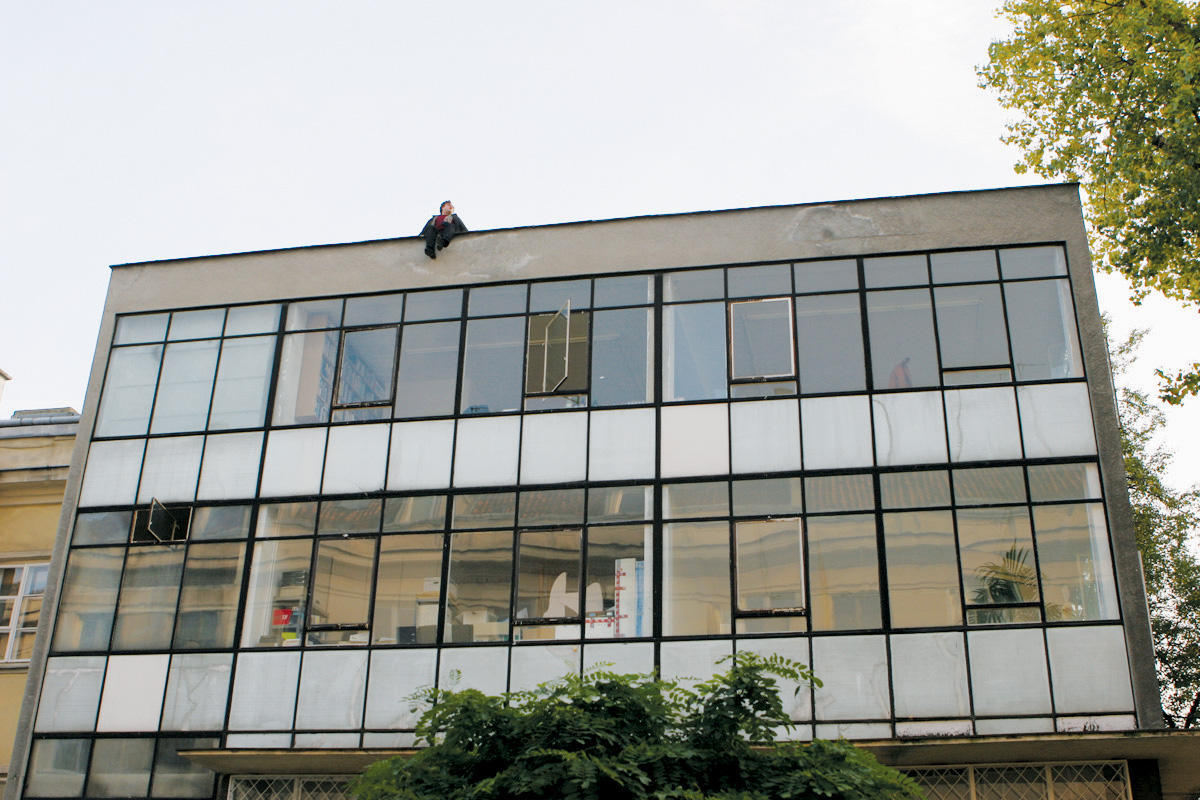
Warsaw
The Exotic Journey Never Ends
Foksal Gallery Foundation
October 21–November 17, 2006
Though the initial proposal for the title of the exhibition was Exhausted [Tired] Modernism, the artists involved in The Exotic Journey Ends appeared tired neither of modernism nor of the post-avant-garde tradition (it was perhaps fitting that the site of Foksal Gallery Foundation is a trademark modernist building from the 60s).
It was in the 1960s that the masters of the Polish avant-garde (from constructivists to conceptualists) cofounded the legendary Foksal Gallery, and to this very day their concepts remain a reference point for projects realized in the newer Foksal Gallery Foundation, founded by Adam Szymczyk, Joanna Mytkowska, and Andrzej Przywara. In 2002, the Foundation encountered Kurimanzutto, a Mexico City-based project founded by José Kuri and Monika Manzutto (and supported by artist Gabriel Orozco) that has no space per se but organizes original, often wacky, site-specific interventions in a variety of contexts (imagine a party in a carpet shop or an art sale in a Mexico City flea market). From there a partnership was born, as both Foksal and Kurimanzutto realized that they had each been touted as purveyors of a new sort of exotica in the art world, involuntary ambassadors expected to reveal the next big thing from Poland and Mexico respectively. A series of conversations and events culminated in The Exotic Journey Ends, a group exhibition in Warsaw that aimed to examine the state of local modernisms and complexify a tendency to look at movements such as theirs in a historical vacuum.
The curators created a space in which works by contemporary Polish and Mexican artists were afforded the chance to rub up against one another, providing novel juxtapositions, novel dialogues. A number of older artists were invited to mix with younger artists — notably Edward Krasinski and André Cadere, both seminal artists in the 1970s, who each in his own way questioned the logic of the gallery space, experimenting with the modest minimal gesture, including quasi-mathematical systems (module, length, height, mistake). Krasinski’s scotch blue lines — interventions in gallery spaces, bars, or paintings, functioned as “reality traps,” visual interventions that made one consider a reformulation of space and also hinted at the possibility of connecting things — whether tangible artistic elements or concepts — in infinite fashion. Cadere, for his part, was perhaps best known for his barre de bois rond, colorful segmented sticks that “interrupted” exhibitions — subtly performative, slightly imperfect, they poked holes in the logic of exhibitionism.
Next to these canonical/historical pieces Orozco’s Samurai Tree 10k engaged the notion of the “masterpiece” painting, employing a method of abstraction based on the mathematical rules of chess. Rirkrit Tiravanija’s Films for Palm Pavilion consisted of a real palm tree juxtaposed with two videos marked by palm tree motifs and an atomic explosion (as seen through palm trees) on a beautiful atoll. Its message about the art world may have been heavy-handed, but it did the job.
Polish artists invited to the show largely focused on the architecture of the space, many preparing site-specific works. Monika Sosnowska’s sculptural intervention in the concrete-oppressive stairwell of the building managed to create the illusion of an organic black iron ribbon-trap that subverted the function of the guardrail, disturbing the audience climbing the stairs to see the show. The same staircase hosted Wilhelm Sasnal’s painting, also gobbling up the modernist architecture of the space, monumentalizing an abstract detail taken from the front of a deli built in the 60s in his hometown of Tarnów.
Outside the building, Cezary Bodzianowski pulled off a performance where he sat for twenty minutes on the edge of the roof, treating the building as a pedestal, a living sculpture that temporarily altered the function and scale of the cube building (art critic Andrzej Przywara remarked that Bodzianowski looked as if he had stepped out of the apocalyptic photographs of Enrique Metinides). His performance resonated with Ortega’s and Krasinski’s dialogue with the size and scale of the space. Pawel Althamer, for his part, prepared a vaguely Indian-looking white drawing on the flat roof, seen only by those who climbed a ladder. And on the grass near the entrance to the building, Miroslaw Balka constructed a wooden Ramp to Nowhere, which besides pointing to the edge of “emptiness” and “exhaustion,” was immediately used by children from the neighborhood — a sort of leap into the unknown, an exotic takeoff.